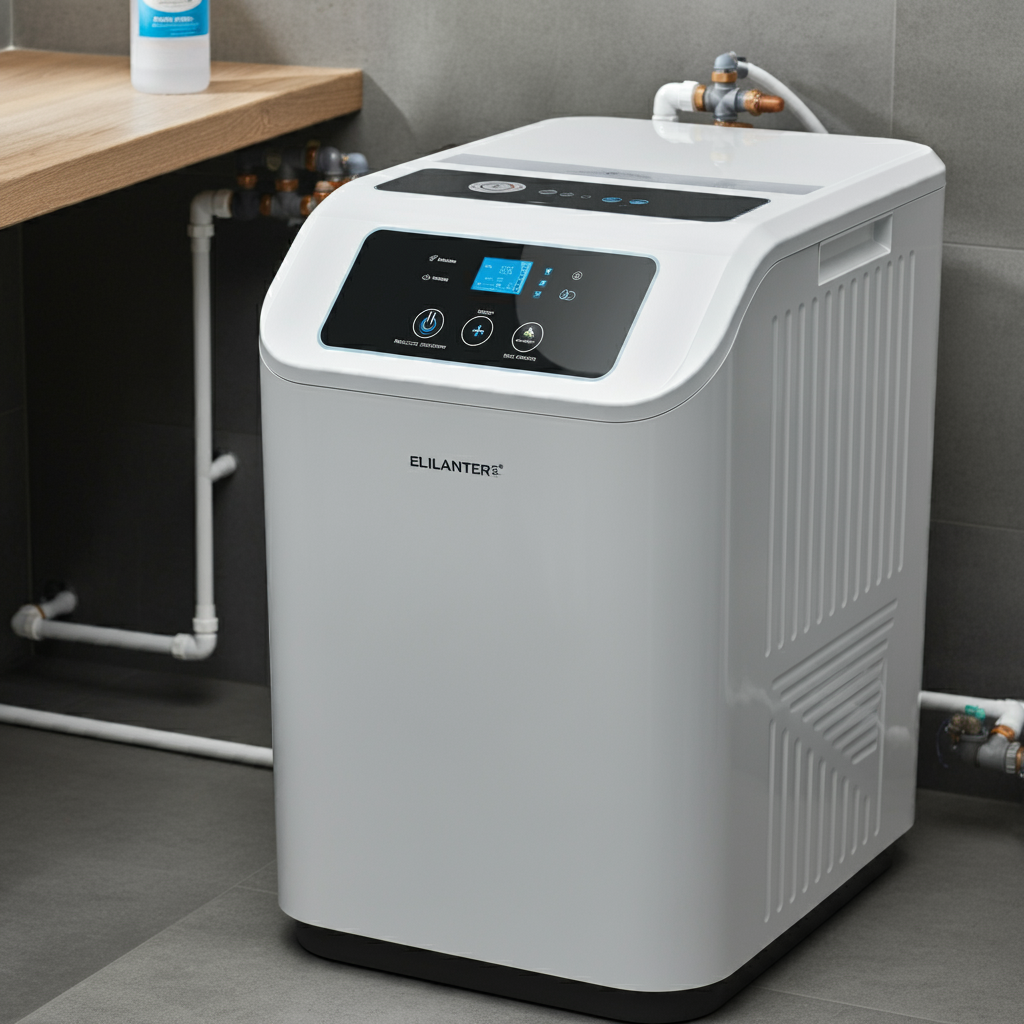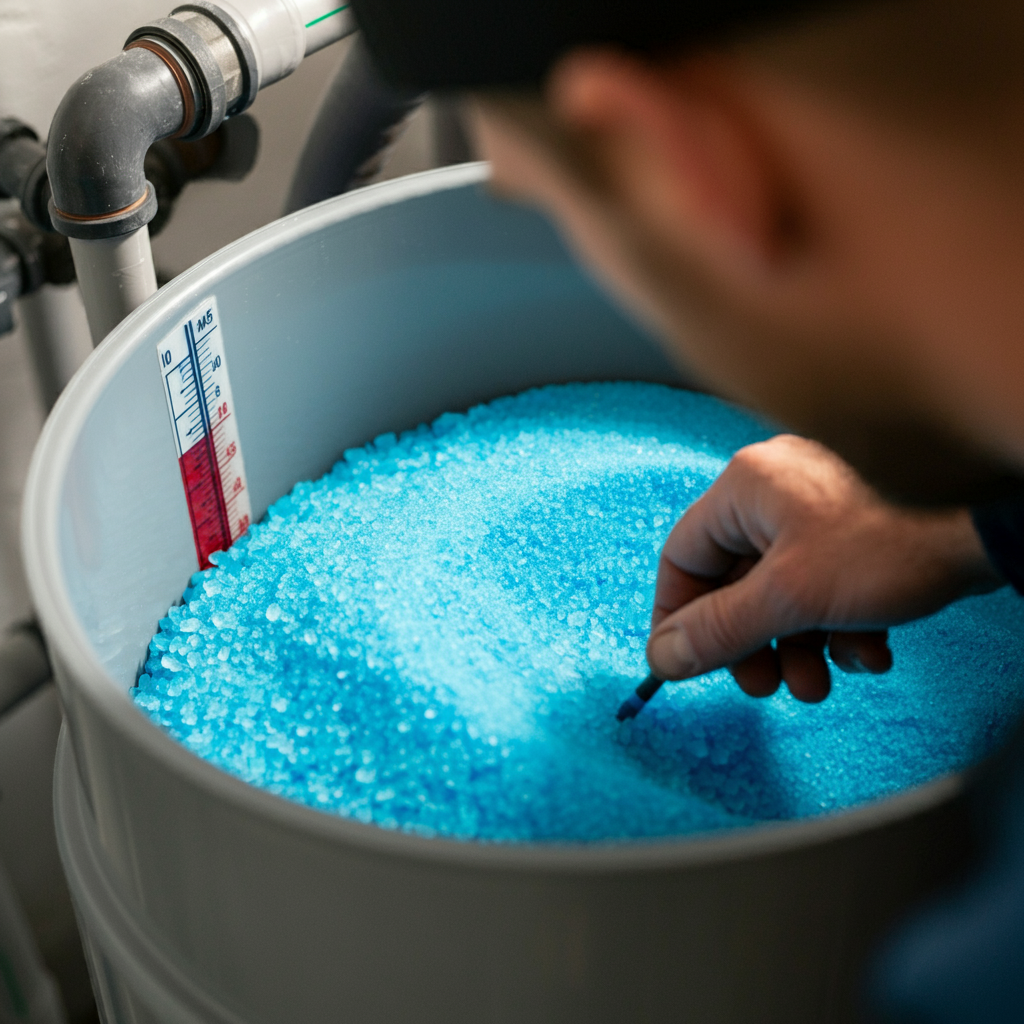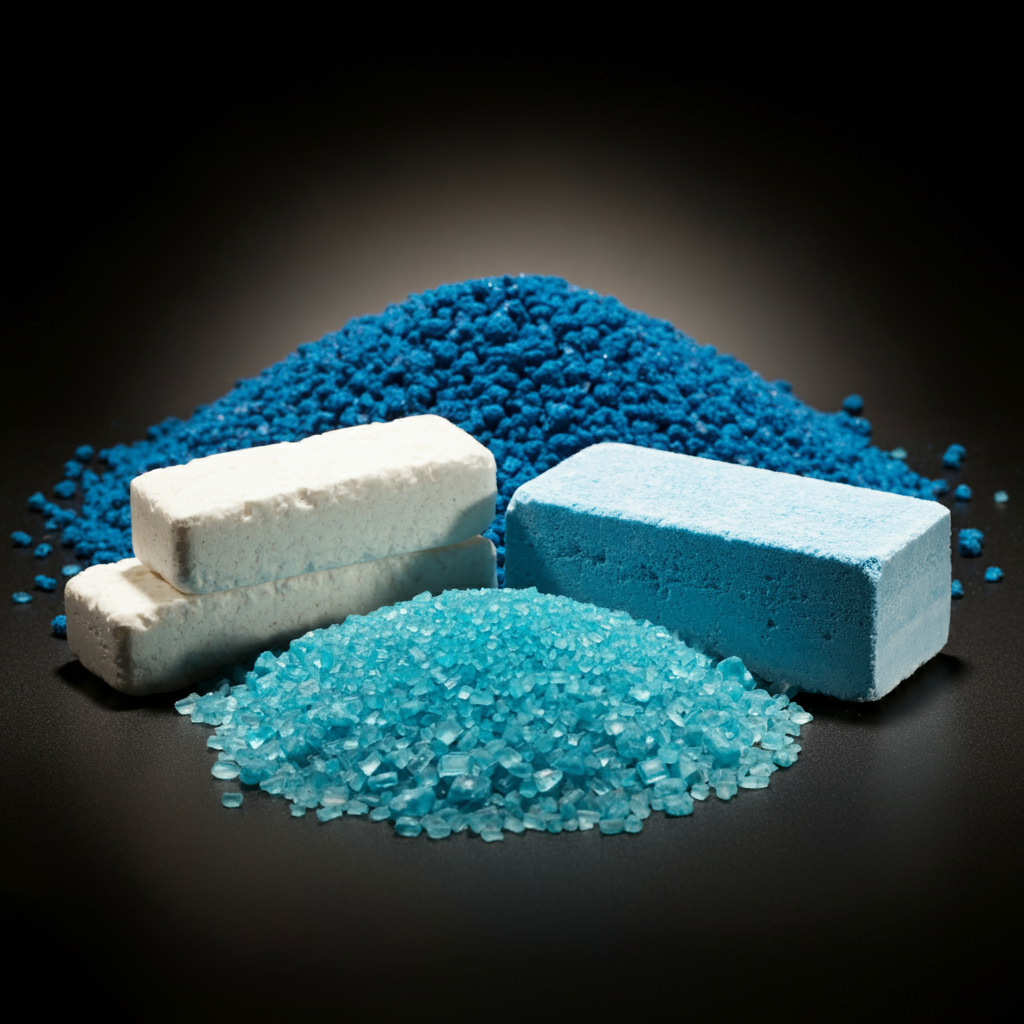The amount of salt your water softener uses isn’t a fixed number. It fluctuates depending on two primary factors: the hardness of your water and the size of your water softener. At WaterSoftenerSizing.com, we understand that softened water is essential for your home’s plumbing, appliances, and your overall comfort. Our expertise lies in accurately determining your unique water softening needs, ensuring you invest in a system that’s both efficient and effective. Hard water, laden with minerals like calcium and magnesium, can wreak havoc on your home. It leaves behind unsightly scale buildup, shortens the lifespan of appliances, and even affects the feel of your skin and hair. Water softeners combat this by replacing these harsh minerals with sodium through a process called ion exchange. This process, however, requires salt to regenerate the softener’s resin beads, which are responsible for attracting and removing the minerals. Understanding the interplay between water hardness, softener size, and salt consumption is crucial in choosing the right system and managing its operation. Water hardness, measured in grains per gallon (gpg), varies significantly across regions and even within the same city. The higher the hardness, the more frequently your softener will need to regenerate, consuming more salt in the process. Similarly, the size of your water softener, measured in grains, determines how much hardness it can remove before requiring regeneration. An undersized softener will regenerate more often, using more salt, while an oversized one might not regenerate frequently enough, leading to inefficient salt use and potential hard water breakthrough. Navigating the complexities of water softener salt usage can be daunting, but it doesn’t have to be. We’re here to guide you through the intricacies, empowering you to make informed decisions about your water softening system. In the following sections, we’ll delve deeper into how water softeners work, the nuances of water hardness, the impact of softener size, and most importantly, how to calculate and optimize your salt usage. Our goal is to equip you with the knowledge and tools necessary to enjoy the benefits of softened water without the guesswork.
How Do Water Softeners Work? (And Why Salt is Essential)
At their core, water softeners are designed to tackle the pesky issue of hard water. But to understand their salt consumption, we need to grasp how these appliances work.
The Ion Exchange Process
Water softeners operate on the principle of ion exchange. Inside the softener, you’ll find a mineral tank filled with tiny resin beads. These beads carry a negative charge and are particularly attracted to positively charged ions like calcium (Ca2+) and magnesium (Mg2+) — the culprits behind water hardness. As hard water flows through the resin bed, the calcium and magnesium ions are pulled towards and stick to the beads, effectively swapping places with sodium (Na+) ions that were originally on the resin. This exchange leaves you with soft water, free from the minerals that cause scaling and buildup.
Regeneration: The Salt’s Time to Shine
Over time, the resin beads become saturated with calcium and magnesium, losing their effectiveness. This is where salt, either in the form of sodium chloride (NaCl) or potassium chloride (KCl), comes into play. The softener initiates a regeneration cycle, flooding the resin bed with a highly concentrated salt solution (brine) from the brine tank. The abundance of sodium ions in the brine dislodges the calcium and magnesium ions from the resin beads, reversing the ion exchange process. The hardness minerals are then flushed out as wastewater, leaving the resin refreshed and ready to soften more water.
The Salt-Resin Relationship
The frequency of regeneration cycles, and therefore salt usage, depends on several factors, including:
- Resin Capacity: The total capacity of the resin beads to hold hardness minerals before needing regeneration is measured in grains. Larger softeners with more resin can go longer between regenerations.
- Water Usage: The more water you use, the faster the resin beads become saturated, requiring more frequent regeneration.
To illustrate, imagine two households:
- Household A: Has a small softener (24,000 grains) and high water usage. Their softener may need to regenerate every few days.
- Household B: Has a larger softener (48,000 grains) and moderate water usage. They might only regenerate once a week.
This difference in regeneration frequency directly translates to varying salt consumption. Household A will inevitably use more salt than Household B due to the increased regeneration cycles.
Understanding Water Hardness: What’s Your Number?
Water hardness, a common term in the water treatment industry, refers to the concentration of dissolved minerals, primarily calcium and magnesium, in your water supply. The level of hardness is measured in grains per gallon (gpg), with higher numbers indicating harder water.
Grains Per Gallon (GPG): The Universal Measure of Hardness
The grains per gallon (gpg) unit quantifies the amount of dissolved calcium carbonate equivalent to one grain (64.8 milligrams) per gallon of water. This standard unit allows for easy comparison of water hardness levels across different regions and water sources.
- Soft water: 0-3 gpg
- Slightly hard water: 3-7 gpg
- Hard water: 7-10.5 gpg
- Very hard water: 10.5+ gpg
The U.S. Geological Survey (USGS) provides a Water Hardness map that outlines the varying levels of water hardness throughout the United States. However, it’s important to note that hardness can fluctuate even within a city, depending on the source of your water and local geological factors. To accurately determine your water hardness, you can utilize a home water testing kit, consult a water treatment professional for a detailed analysis, or request a water quality report from your local water utility.
Why Water Hardness Matters
The level of hardness in your water directly impacts your daily life. Hard water leaves behind limescale deposits on fixtures, faucets, and appliances. Over time, this buildup can decrease the efficiency and lifespan of your water heater, dishwasher, washing machine, and other water-using appliances. Additionally, hard water can make soap less effective, leading to dry skin and hair, dingy laundry, and spotty dishes. To illustrate, consider these scenarios:
- Scenario 1: A household with very hard water (15 gpg) may find their water heater failing within a few years due to excessive scale buildup.
- Scenario 2: A household with soft water (1 gpg) will likely enjoy longer-lasting appliances and avoid the nuisances of soap scum and limescale.
Does Softener Size Really Matter for Salt Usage?
Absolutely! The size of your water softener plays a pivotal role in determining its salt consumption. Softener size, measured in grains, reflects the system’s capacity to remove hardness minerals from your water before requiring regeneration. The higher the grain capacity, the more minerals it can hold and the longer it can operate between regeneration cycles.
Grain Capacity: Your Softener’s Storage for Hardness
Think of the softener’s grain capacity as a bucket. A larger bucket can hold more water before overflowing, just as a larger softener can remove more hardness minerals before needing to be refreshed with salt. This means that a properly sized softener, tailored to your water hardness and household usage, can significantly impact salt consumption. However, choosing the correct size is crucial. An undersized softener, like a small bucket, will quickly fill up with hardness minerals and require frequent regeneration, leading to increased salt usage. Conversely, an oversized softener may not regenerate often enough, resulting in inefficient salt utilization and potential “hard water breakthrough,” where untreated hard water passes through the system.
The Interplay of Size, Water Usage, and Regeneration
To illustrate, let’s consider two households with different softener sizes and water usage:
- Household A: Has a 32,000-grain water softener and a family of four, using an average of 300 gallons of water per day. With moderately hard water (10 gpg), this softener might regenerate every 3-4 days.
- Household B: Also has a family of four, but they use less water (200 gallons per day) and have a larger 48,000-grain softener. Even with the same water hardness (10 gpg), this softener might regenerate only once a week.
Clearly, Household A’s softener, despite having a smaller household size, would consume more salt annually due to its smaller capacity and the resulting more frequent regeneration cycles.
Water Softener Sizing: The Key to Optimized Salt Use
It’s evident that selecting the right softener size for your specific needs is paramount for managing salt consumption. Oversizing or undersizing your system can lead to unnecessary salt waste and potential hard water issues. At WaterSoftenerSizing.com, we specialize in providing accurate, personalized sizing recommendations, ensuring that your softener operates efficiently and minimizes salt usage. By taking into account factors such as your water hardness, daily water usage, household size, and specific appliances, we can guide you towards a softener that perfectly balances performance and salt efficiency. Our expert sizing calculations and personalized recommendations guarantee that you invest in a system that delivers optimal results and long-term value. Remember, an appropriately sized softener is not only an investment in your home’s plumbing and appliances but also a conscious choice towards responsible salt usage and environmental sustainability.
Calculating Your Water Softener’s Salt Consumption
Understanding how much salt your water softener uses is essential for both budgeting and environmental consciousness. While the exact amount varies, we can estimate your softener’s salt consumption using a few key factors.
The Salt Usage Formula
A general rule of thumb suggests that for every grain per gallon (gpg) of hardness removed per 1,000 gallons of water, a water softener uses approximately 15 pounds of salt. We can express this relationship in a simple formula: Salt Usage (lbs) = (Water Hardness (gpg) * Water Usage (gallons)) / 1,000 * 15 Let’s apply this formula to two different scenarios:
- Scenario 1: High Hardness, Large Family: A family of five living in an area with very hard water (15 gpg) and using 400 gallons of water per day would use approximately 360 pounds of salt per year.
- Scenario 2: Moderate Hardness, Smaller Household: A couple living in an area with moderately hard water (8 gpg) and using 200 gallons of water per day would use approximately 96 pounds of salt per year.
These examples demonstrate how water hardness and usage significantly impact salt consumption. It’s important to note that this is a simplified calculation. Actual salt usage can be influenced by additional factors, such as softener efficiency, salt type, and regeneration settings.
Beyond the Basics: Additional Factors Affecting Salt Usage
- Softener Efficiency: High-efficiency water softeners, like the Culligan HE Series, are designed to optimize salt usage during regeneration, often consuming less than 15 pounds of salt per 1,000 grains of hardness removed.
- Salt Type: While sodium chloride (NaCl) is the most common type of water softener salt, potassium chloride (KCl) can be used as a substitute for individuals on sodium-restricted diets. However, KCl is less efficient than NaCl, requiring approximately 1.5 times more salt for the same softening capacity.
- Regeneration Settings: Most modern softeners allow for adjustable regeneration settings. While more frequent regenerations ensure consistently soft water, they also lead to increased salt consumption. Conversely, less frequent regenerations might conserve salt but could result in occasional hard water breakthrough.
Finding Your Salt Usage Sweet Spot
At WaterSoftenerSizing.com, we can help you fine-tune your softener settings and recommend the optimal salt type for your specific needs. Our goal is to strike the perfect balance between water softness, salt efficiency, and environmental considerations. By analyzing your water usage patterns and hardness levels, we can help you calculate a more precise estimate of your annual salt consumption and explore potential strategies for optimization. Remember, understanding your water softener’s salt usage isn’t just about managing costs. It’s also about minimizing your environmental impact. By optimizing your softener’s operation, you can reduce salt waste and contribute to a more sustainable approach to water treatment.
Optimizing Salt Usage: Tips to Save Money and the Environment
While the relationship between water hardness, softener size, and salt usage is undeniable, there are several strategies you can implement to optimize your salt consumption, save money, and reduce your environmental impact.
1. Fine-Tune Your Softener Settings
Modern water softeners, such as those offered by Kinetico and EcoWater Systems, often come equipped with adjustable regeneration settings. These settings allow you to control the frequency of regeneration cycles based on your actual water usage patterns. By analyzing your household’s water consumption and adjusting the settings accordingly, you can avoid unnecessary regenerations, thus conserving salt.
2. Invest in a High-Efficiency Water Softener
High-efficiency water softeners, like the Culligan HE Series, utilize advanced technologies to minimize both water and salt usage during regeneration. These softeners often employ counter-current regeneration, which flushes the resin bed in the opposite direction of service flow, ensuring a more thorough cleaning with less salt. While high-efficiency softeners may have a higher upfront cost, their long-term savings in salt and water can make them a worthwhile investment.
3. Choose the Right Salt
Not all water softener salt is created equal. Using high-purity salt, such as evaporated salt pellets or crystals, can improve softener efficiency and reduce salt bridging (the formation of a salt crust in the brine tank). While solar salt may be cheaper, it often contains impurities that can hinder softener performance and necessitate more frequent cleaning.
4. Regular Maintenance is Key
Maintaining your water softener is essential for optimal salt usage. Regularly check the brine tank level and refill it as needed to ensure adequate salt supply for regeneration. Additionally, periodic cleaning of the brine tank can prevent salt bridging, which can disrupt the regeneration process and lead to wasted salt. Scheduling annual maintenance with a qualified water treatment professional can also ensure your softener is operating at peak efficiency.
The Impact of Optimized Salt Usage
By implementing these optimization strategies, you can significantly reduce your water softener’s salt consumption. This not only saves you money on salt purchases but also lessens the environmental impact associated with salt discharge. High levels of sodium and chloride in wastewater can harm aquatic life and affect soil quality. By being mindful of your salt usage, you contribute to a more sustainable approach to water treatment. At WaterSoftenerSizing.com, we can help you assess your water softener’s performance, fine-tune its settings, and recommend the most suitable salt type for your needs. Our goal is to empower you to achieve soft water while minimizing salt consumption and environmental impact.
Exploring Salt Alternatives: Are They Right for You?
While salt plays a crucial role in the regeneration process of traditional water softeners, concerns about sodium intake or environmental impact have led to the development of alternative solutions.
Potassium Chloride (KCl): A Sodium-Free Option
For individuals on sodium-restricted diets or those concerned about the environmental impact of sodium chloride discharge, potassium chloride (KCl) offers a viable alternative. KCl functions similarly to NaCl in the regeneration process, replacing hardness minerals with potassium ions instead of sodium. However, it’s important to note that KCl is less efficient than NaCl, requiring approximately 1.5 times more salt to achieve the same level of softening. This translates to higher operating costs and potentially more frequent replenishments.
Salt-Free Systems: A Different Approach
Salt-free water conditioners, also known as Template Assisted Crystallization (TAC) systems, offer a fundamentally different approach to water treatment. These systems don’t remove hardness minerals but instead alter their structure, preventing them from forming scale buildup. TAC systems utilize a catalytic media, typically a bed of polymeric beads, to transform dissolved calcium carbonate into microscopic crystals. These crystals remain suspended in the water, unable to adhere to surfaces and cause scaling.
Pros and Cons of Salt Alternatives
| Feature | Potassium Chloride (KCl) | Salt-Free Systems (TAC) |
| Sodium content | None | None |
| Effectiveness | Less effective than NaCl, requiring more salt for the same result | Effective at preventing scale buildup, but doesn’t address other hard water issues like soap scum and dry skin |
| Cost | More expensive than NaCl | Higher upfront cost, but no ongoing salt costs |
| Maintenance | Similar to NaCl softeners, requires periodic replenishment and cleaning of the brine tank | Requires periodic replacement of the catalytic media |
| Environmental impact | Lower sodium discharge compared to NaCl | Considered more environmentally friendly due to the absence of salt discharge |
| Suitable for | Individuals on sodium-restricted diets, those concerned about sodium discharge | Homes with moderate hardness levels primarily concerned with scale prevention, households seeking an eco-friendly option |
Choosing the Right Solution for You
While salt alternatives offer potential benefits, it’s crucial to assess your specific needs and priorities. Factors like water hardness, household size, budget, and environmental concerns should all be considered when making a decision. At WaterSoftenerSizing.com, our experts can help you evaluate different options and determine if a salt alternative is suitable for your situation. We take pride in providing personalized recommendations based on your unique water conditions and requirements, ensuring you choose a system that delivers optimal results and aligns with your values.
our Salt Usage: A Personalized Approach
At WaterSoftenerSizing.com, we understand that every household is unique. Your water hardness, family size, daily water usage, and even the specific appliances you use all contribute to your individual salt consumption needs. That’s why we offer a personalized approach to water softener sizing and salt management.
Our Expertise: Tailored Recommendations for You
Our team of water treatment professionals utilizes industry-leading tools and methodologies, combined with your specific data, to determine the ideal water softener size and configuration for your home. We take a holistic approach, considering not only your water hardness but also your daily water usage, household size, and the types of appliances you use that are impacted by hard water. By analyzing these factors, we can recommend the most suitable softener models from reputable brands like SoftPro, Culligan, Kinetico, or GE Appliances, ensuring optimal performance and salt efficiency. Our personalized recommendations take the guesswork out of choosing the right system, giving you peace of mind knowing that your investment is tailored to your specific needs. 
The Benefits of Personalized Sizing
Choosing a softener based solely on price or generic recommendations can lead to costly mistakes. An undersized softener will lead to excessive salt usage and potential hard water issues, while an oversized unit might not regenerate efficiently, wasting both salt and water. Our personalized approach ensures that your softener operates at peak efficiency, minimizing salt consumption while delivering consistently soft water throughout your home. This translates to cost savings on salt purchases, reduced environmental impact, and a longer lifespan for your appliances and plumbing fixtures.
Take the First Step: Free Water Softener Sizing Consultation
Don’t leave your water softener sizing to chance. Take advantage of our free water softener sizing consultation to receive expert advice and personalized recommendations. Our team is dedicated to helping you find the perfect softener solution that meets your unique needs and budget. Visit our website at WaterSoftenerSizing.com to utilize our user-friendly water softener sizing calculator, explore our comprehensive resources on water softening, or contact our experts for personalized assistance. We are committed to empowering you with the knowledge and tools necessary to make informed decisions about your water treatment system and enjoy the benefits of soft, luxurious water in your home.
Mastering Your Water Softener Salt Usage: A Personalized Approach
As we’ve explored, the amount of salt your water softener uses is a dynamic interplay of factors, primarily influenced by your water hardness and the size of your softener. Understanding these factors is key to optimizing your salt usage, saving money, and minimizing environmental impact. Water hardness, measured in grains per gallon (gpg), varies significantly across regions and even within the same city. It dictates how often your softener needs to regenerate and, consequently, how much salt it consumes. The size of your softener, measured in grains, determines its capacity to remove hardness minerals before requiring regeneration, directly impacting salt usage frequency. While a general rule suggests that a softener uses approximately 15 pounds of salt per 1,000 gallons of water treated for each grain of hardness removed, this is just an estimate. Actual salt usage can be influenced by other factors like water usage habits, softener efficiency, salt type, and regeneration settings. At WaterSoftenerSizing.com, we recognize the importance of personalized solutions. Our expert team considers your unique water hardness, daily usage, household size, and specific appliances to recommend the ideal softener size and settings for your home. We prioritize efficiency, helping you achieve soft water while minimizing salt consumption.
Key Takeaways
- Water Hardness Matters: The harder your water, the more salt your softener will use.
- Size It Right: Choosing the right softener size is crucial for optimal salt efficiency.
- Optimize Your Settings: Adjust your softener settings to match your water usage and hardness for maximum salt savings.
- High-Efficiency Softeners: Consider investing in a high-efficiency model for reduced salt and water consumption.
- Salt Alternatives: Explore potassium chloride (KCl) or salt-free systems if you have specific dietary or environmental concerns.
Take control of your water softener salt usage today. Visit WaterSoftenerSizing.com for a free consultation and discover how we can help you optimize your water softener for maximum efficiency and minimal environmental impact. Let us guide you towards the perfect water softening solution for your home and enjoy the benefits of soft water without the worry of excessive salt consumption.

Craig “The Water Guy” Phillips is the founder of Quality Water Treatment (QWT) and creator of SoftPro Water Systems.
With over 30 years of experience, Craig has transformed the water treatment industry through his commitment to honest solutions, innovative technology, and customer education.
Known for rejecting high-pressure sales tactics in favor of a consultative approach, Craig leads a family-owned business that serves thousands of households nationwide.
Craig continues to drive innovation in water treatment while maintaining his mission of “transforming water for the betterment of humanity” through transparent pricing, comprehensive customer support, and genuine expertise.
When not developing new water treatment solutions, Craig creates educational content to help homeowners make informed decisions about their water quality.



